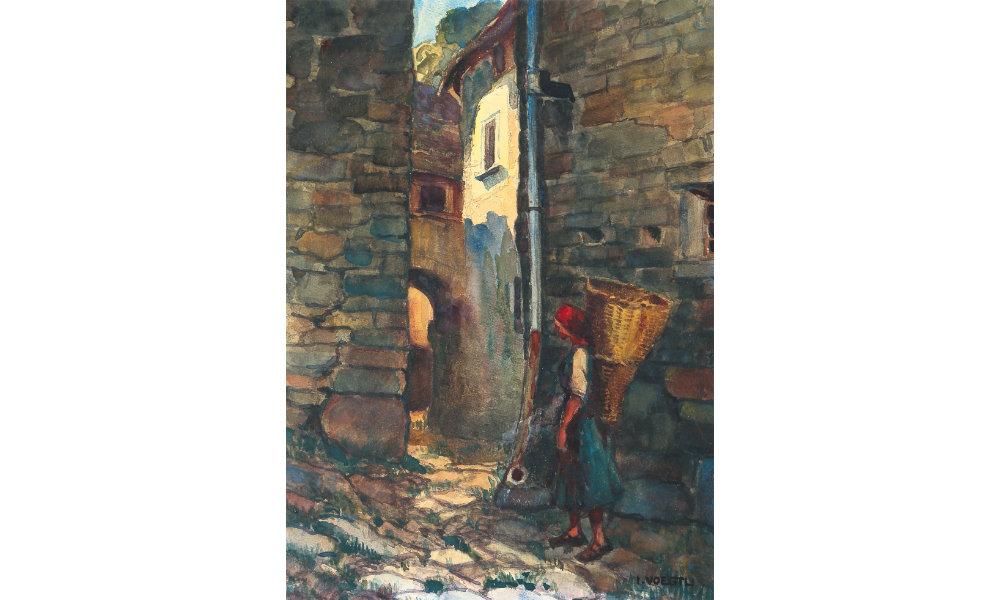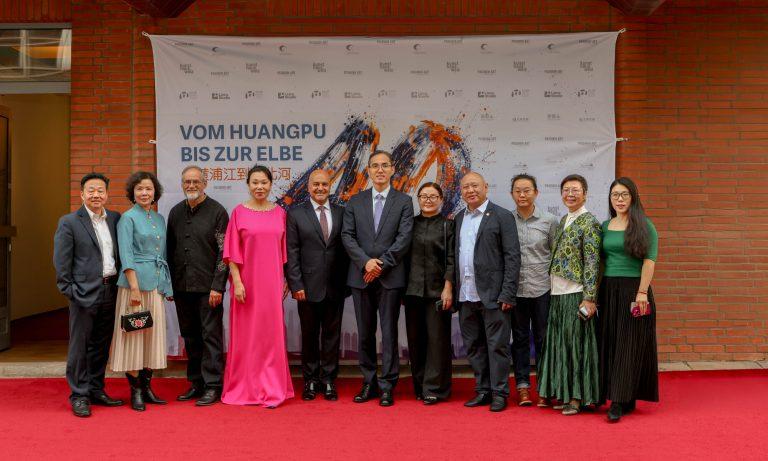Once again, Voegtli has painted an aquarelle, titled “Ticino Girl in the Back Courtyard.” Most likely, it’s the same young woman that he had already immortalized in “Ticino Girl” (Picture 46). This time it’s almost impossible to recognize her face; however, she again is wearing a red headscarf, a blue dress – this time with white sleeves and loose sandals. Her lower arms and legs under the knees are bare. On her back this time, she is not carrying a loosely bound wicker basket, but a much heavier pannier, with which she is apparently lugging provisions for the field hands who tend to the herds on the alpine pastures and mainly produce cheese in the summer.
The “Ticino Girl in the Back Courtyard,” despite her delicate and graceful appearance, is performing an arduous work. She is surrounded by dark, massive rocks, walls, and pavement stones that seem almost ready to crush her. It’s an image of the heavy burden the young woman has to carry. The sunlight does not fall directly onto her. Only on the house wall on the right and on the pavement toward the bottom is a reflection of the recognizable sun. Not much is left of the summery serenity found in his other paintings.
Sources:
Schütt, Peter (2022) “Ticino Girl in the Back Courtyard”, in: JULIUS VOEGTLI: A Swiss Impressionist Pioneer, Edited by Nour Nouri & Davood Khazaie, Pashmin Art Publishers, pp.74-75.
Julius Vögtli (1879-1944) was a Swiss painter who played a key role in the development of impressionism in Switzerland. His landscape paintings, which often depicted the Swiss countryside, were characterized by their vibrant colors and expressive brushstrokes. Vögtli’s work helped to establish impressionism as a major artistic movement in Switzerland during the late 19th and early 20th centuries.



